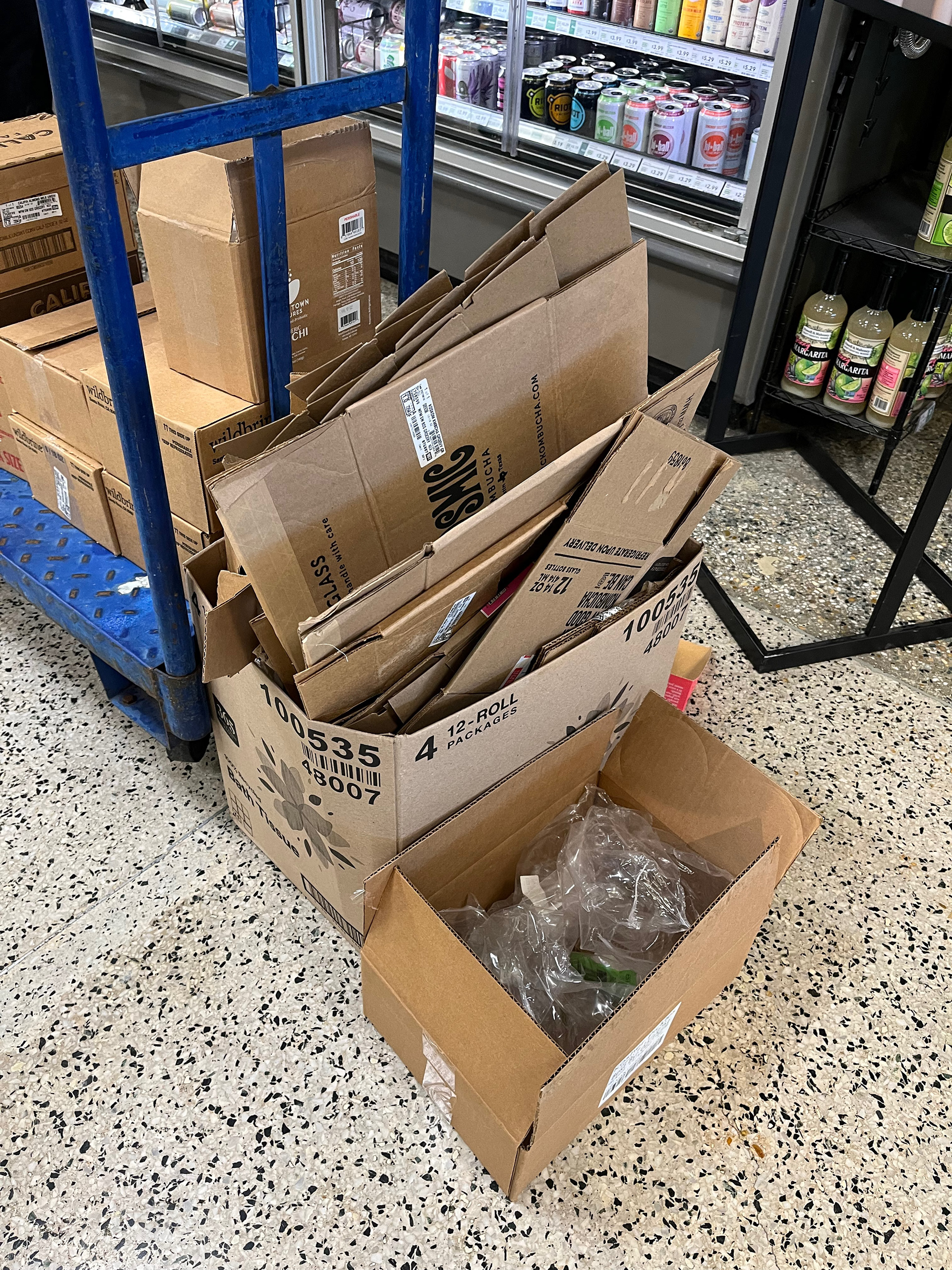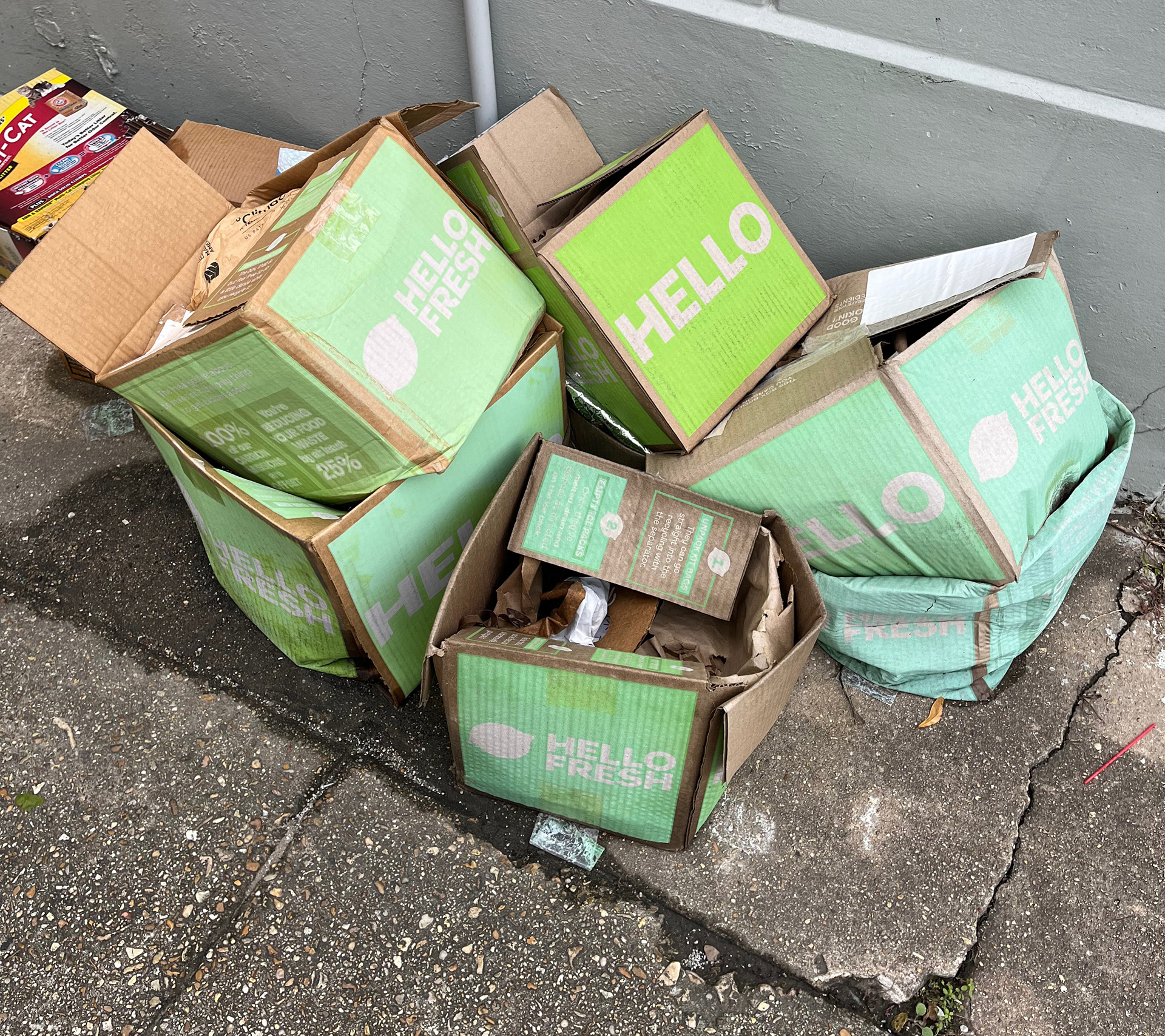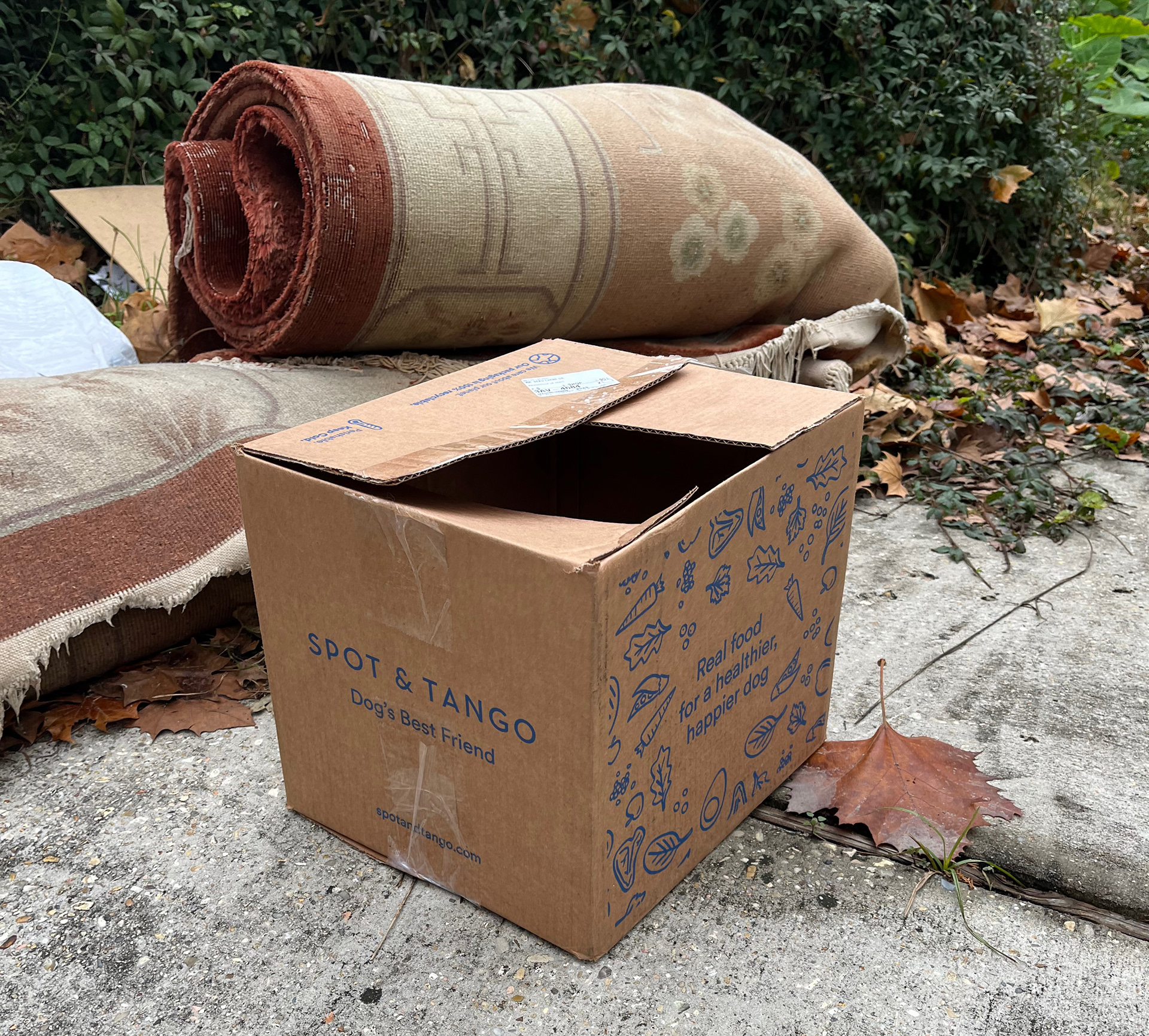
At the grocery store.

Neglected, soggy pile of garbage.

On the sidewalk.

Waiting for trash day.
Project Statement
In our role as consumers, everything we acquire, whether through home deliveries or local stores, arrives in a cardboard box. These boxes accumulate in neighborhoods globally, representing an overwhelming volume of cardboard in our modern world. The complexity of this scenario has been heightened by the challenges of Covid, with lockdowns prompting an increased dependence on home delivery services. Our purchasing power often correlates with privilege, leading to a fixation on the convenience and seemingly limitless inventory of online platforms. Our pursuit of instant gratification and unchecked greed has resulted in overflowing landfills and the emergence of plastic islands in our oceans.
This project aims to explore the question of how we can reconcile our addiction to consumerism while becoming responsible stewards of our planet. From the urban fabric, I harvest materials readily available, as cardboard boxes are ubiquitous. Engaging in scavenger hunts around local businesses and dumpsters, I collect discarded boxes for recycling, including the ones delivered to my own house. The collected boxes are flattened, cut into strips ranging from ⅜” to 1”, with corrugated insides removed. This meticulous process yields two weavable strips of kraft paper, serving as both warp and weft.
These pieces not only reflect an environmentally conscious approach but also serve as a personal audit of my consumption patterns.
Jill Stoll, 2022-2025
Jill Stoll, 2022-2025
Cardboard in Captivity